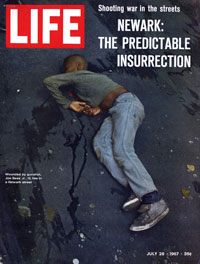US | Visual Culture and the Struggle for Civil Rights
By Mohamed Keita
Lest we forget, it was the gruesome images of police brutality in places like Montgomery or Birmingham, Alabama in 1963 that brought a human rights crisis into worldview. President John F. Kennedy would disclose to aides that he had been make sick by a New York Times front page photograph showing a police dog chewing on the stomach of a teenager.
The critical contribution of the image to the struggle for equality and justice is on view at the International Center of Photography in For all the World to See: Visual Culture and the Struggle for Civil Rights—a multimedia exhibition contemplating the power of mass media in shaping, for better or worse, the attitudes of our society. You put up the money required for bail. You’ve followed all of the restrictions of your bail. You feel that you have done everything right in this situation. So, when do you get bail money back if innocent? It is important to remember that this post is regarded with bail money that was paid fully in cash, also known as a cash bond.
Under the direction of guest curator Maurice Berger, 250 photographs, posters, audio and video footage chronicle the attitude of commercial advertising, magazine publishing, and film and television entertainment from the 1940s to 1970s.
For all the World to See rests on fortuitous timing: the civil rights movement coincided with the coming of age of television and mass media magazines, among other forms of visual media, presenting both opportunity and challenge. So while a 1955 Jet magazine photo of the mutilated body of Emmitt Till is a reminder of the persistence of hate crimes, James Baldwin’s words, “There will be a Negro president of this country but it will not be the country that we are sitting in now,” from a clip of Take This Hammer, a 1963 documentary film with novelist, is prophetic.
For all the World to See: Visual Culture and the Struggle for Civil Rights reminds us that this was an era where visual galore was often in the hands of select professional photographers, magazine editors, illustrators, and cameramen. Today, the ease and accessibility of new technologies have democratized picture-taking, graphic design and video making, allowing anyone to instantly broadcast to a global audience. Imagine how differently this period might have been portrayed in the age of information.
On view until September 10, 2010 at the International Center for Photography, New York City.

